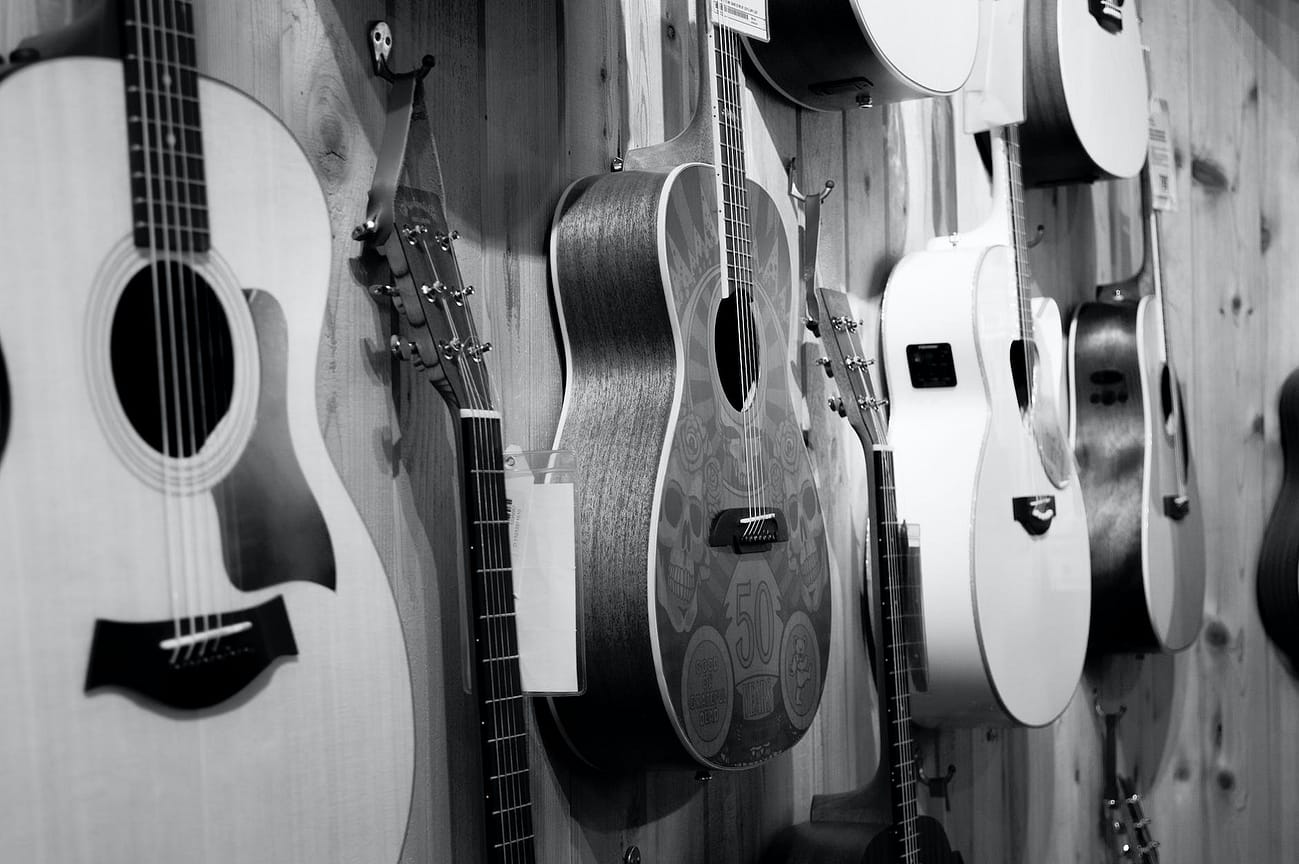
Classical acoustic guitars, often simply referred to as classical guitars or nylon-string guitars, differ from other types of acoustic guitars primarily in terms of their construction, strings, and playing style. Here are the key differences:
Strings:
- Classical Guitars: Classical guitars are equipped with nylon strings. These strings produce a mellow and warm tone. The three treble strings are made of pure nylon, while the lower three bass strings are typically wound with nylon or other materials like silver-plated copper.
- Other Acoustic Guitars: Most other acoustic guitars, including steel-string acoustic guitars, use steel strings. These strings create a brighter and more pronounced sound due to their higher tension and metal composition.
Neck and Fretboard:
- Classical Guitars: Classical guitar necks are usually wider and have a flat fingerboard. This wider neck allows for fingerstyle playing, as well as techniques like fingerpicking and classical guitar-specific techniques such as “rest stroke” and “free stroke.”
- Other Acoustic Guitars: Steel-string and other acoustic guitars typically have narrower necks with curved fingerboards. This facilitates strumming and flatpicking styles commonly used in folk, rock, and country music.
Body Shape and Size:
- Classical Guitars: Classical guitars often have a smaller, more traditional body shape with a pronounced waist. This design emphasizes clarity and projection of individual notes and suits classical and fingerstyle playing.
- Other Acoustic Guitars: Steel-string acoustic guitars come in various body shapes, including dreadnought, jumbo, auditorium, and concert shapes, which are larger and provide more volume and resonance suited for strumming and picking in various styles.
Tone and Sound:
- Classical Guitars: The nylon strings and smaller body of classical guitars produce a mellower and warmer tone. They are well-suited for classical, flamenco, and fingerstyle music.
- Other Acoustic Guitars: Steel-string guitars produce a brighter and louder sound, making them suitable for a wide range of genres, including folk, country, rock, blues, and more.
Playing Style:
- Classical Guitars: Classical guitarists often use fingerpicking techniques and play with their fingertips or fingernails. Classical guitar music includes a rich repertoire of classical and flamenco pieces.
- Other Acoustic Guitars: Players of steel-string acoustic guitars typically use a combination of strumming, flatpicking, and fingerpicking techniques to suit various musical genres.

Most Affordable/Least Expensive Classical Guitars:
- Ramírez 1A Model:
- The Ramírez 1A is a highly regarded and expensive classical guitar, crafted by the renowned Spanish guitar-making family, Ramirez. These guitars are known for their exceptional craftsmanship, high-quality materials, and beautiful tonal characteristics. They often demand high prices due to their reputation in the classical guitar world.
- Hermann Hauser II:
- Hermann Hauser II was a famous German luthier, and his guitars are considered some of the best classical guitars in the world. Instruments made by him or his workshop, especially those used by famous classical guitarists, can command extremely high prices at auctions or among collectors.
- Yamaha C40:
- The Yamaha C40 is often recommended as an entry-level classical guitar. It’s known for being affordable, yet it offers decent playability and sound quality for beginners or those on a budget. It’s a good option for someone just starting to learn classical guitar.
- Cordoba C1:
- Cordoba is a well-known brand that offers various classical guitars at different price points. The Cordoba C1 is typically considered an affordable classical guitar with good quality for its price range, making it suitable for beginners and students.

Here are several YouTube channels that focus on classical guitar, offering tutorials, performances, lessons, and discussions related to classical guitar music:
- This is Classical Guitar: Run by Bradford Werner, This is Classical Guitar provides an array of classical guitar performances, lessons, tutorials, and sheet music resources.This is Classical Guitar – YouTube Channel
- Elite Guitarist: Elite Guitarist offers a range of classical guitar lessons, masterclasses, performances, and tutorials by professional guitarists.Elite Guitarist – YouTube Channel
- Classical Guitar Shed: This channel provides classical guitar lessons, practice tips, and discussions to assist players of all levels in their learning journey.Classical Guitar Shed – YouTube Channel
- Classical Guitar Corner: Founded by Simon Powis, this channel offers lessons, tutorials, and discussions on classical guitar technique, repertoire, and musical interpretation.Classical Guitar Corner – YouTube Channel
- Tavi Jinariu: Tavi Jinariu, a classical guitarist, shares his performances of classical guitar pieces, tutorials, and recordings on his channel.Tavi Jinariu – YouTube Channel
- Classical Guitar Review: This channel focuses on classical guitar reviews, demonstrations, and discussions about various classical guitars and related equipment.Classical Guitar Review – YouTube Channel
- Classical Guitar Method: A channel dedicated to classical guitar lessons, tutorials, and performances for beginners and intermediate players.Classical Guitar Method – YouTube Channel
These channels offer a wealth of information, tutorials, performances, and insights into the world of classical guitar playing. Whether you’re a beginner or an advanced player, you’ll likely find valuable content tailored to your needs.

Leave A Comment